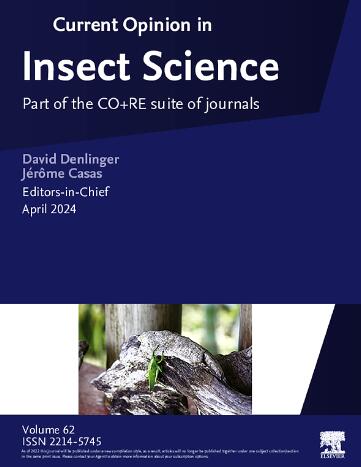Genetic control strategies for population suppression in the Anopheles gambiae complex: a review of current technologies
IF 4.8
1区 农林科学
Q1 BIOLOGY
引用次数: 0
Abstract
Malaria continues to pose a critical public health threat, with mosquitoes from the Anopheles gambiae complex acting as the main vectors of the disease in sub-Saharan Africa, where approximately 95% of malaria-related deaths occur. Despite significant advancements in vector control, such as insecticide-treated bed nets and indoor spraying, the effectiveness of these interventions is increasingly compromised by various challenges, including rising levels of insecticide and pathogen resistance, mosquito behavioural adaptations, and persistent funding gaps. In this context, genetic vector control strategies have shown considerable promise, primarily based on findings from controlled laboratory studies. This review explores the development of these genetic approaches within the Anopheles gambiae complex and outlines future directions for their advancement and potential integration into malaria control efforts.
冈比亚按蚊复合体种群抑制的遗传控制策略:当前技术综述
疟疾继续构成严重的公共卫生威胁,冈比亚按蚊群的蚊子是撒哈拉以南非洲的主要病媒,约95%的疟疾相关死亡发生在该地区。尽管在病媒控制方面取得了重大进展,如经杀虫剂处理的蚊帐和室内喷洒,但这些干预措施的有效性日益受到各种挑战的影响,包括杀虫剂和病原体耐药性水平上升、蚊子行为适应以及持续的资金缺口。在这种情况下,遗传媒介控制策略显示出相当大的希望,主要基于对照实验室研究的结果。这篇综述探讨了这些遗传方法在冈比亚按蚊复合体中的发展,并概述了它们的发展和潜在整合到疟疾控制工作中的未来方向。
本文章由计算机程序翻译,如有差异,请以英文原文为准。
求助全文
约1分钟内获得全文
求助全文
来源期刊

Current opinion in insect science
BIOLOGYECOLOGYENTOMOLOGY-ECOLOGY
CiteScore
10.40
自引率
1.90%
发文量
113
期刊介绍:
Current Opinion in Insect Science is a new systematic review journal that aims to provide specialists with a unique and educational platform to keep up–to–date with the expanding volume of information published in the field of Insect Science. As this is such a broad discipline, we have determined themed sections each of which is reviewed once a year.
The following 11 areas are covered by Current Opinion in Insect Science.
-Ecology
-Insect genomics
-Global Change Biology
-Molecular Physiology (Including Immunity)
-Pests and Resistance
-Parasites, Parasitoids and Biological Control
-Behavioural Ecology
-Development and Regulation
-Social Insects
-Neuroscience
-Vectors and Medical and Veterinary Entomology
There is also a section that changes every year to reflect hot topics in the field.
Section Editors, who are major authorities in their area, are appointed by the Editors of the journal. They divide their section into a number of topics, ensuring that the field is comprehensively covered and that all issues of current importance are emphasized. Section Editors commission articles from leading scientists on each topic that they have selected and the commissioned authors write short review articles in which they present recent developments in their subject, emphasizing the aspects that, in their opinion, are most important. In addition, they provide short annotations to the papers that they consider to be most interesting from all those published in their topic over the previous year.
 求助内容:
求助内容: 应助结果提醒方式:
应助结果提醒方式:


